
A robust spring dye plant
Natural dyeing with Gorse flowers is beautiful in every way, except for the sharp thorny branches that you have to work around! Be careful if you decide to go and forage for this glorious source of natural dye.
During this time of year, the Dublin mountains are laden with this intoxicating shrub. If you can get up close, its scent carries the promise of summer through notes of coconut & vanilla. This prolific plant is easy to spot with its thorny branches and vibrant yellow flowers that blossom in Spring. Its perfume fills the air with a sweet-smelling aroma & carries promises of warmer days ahead.
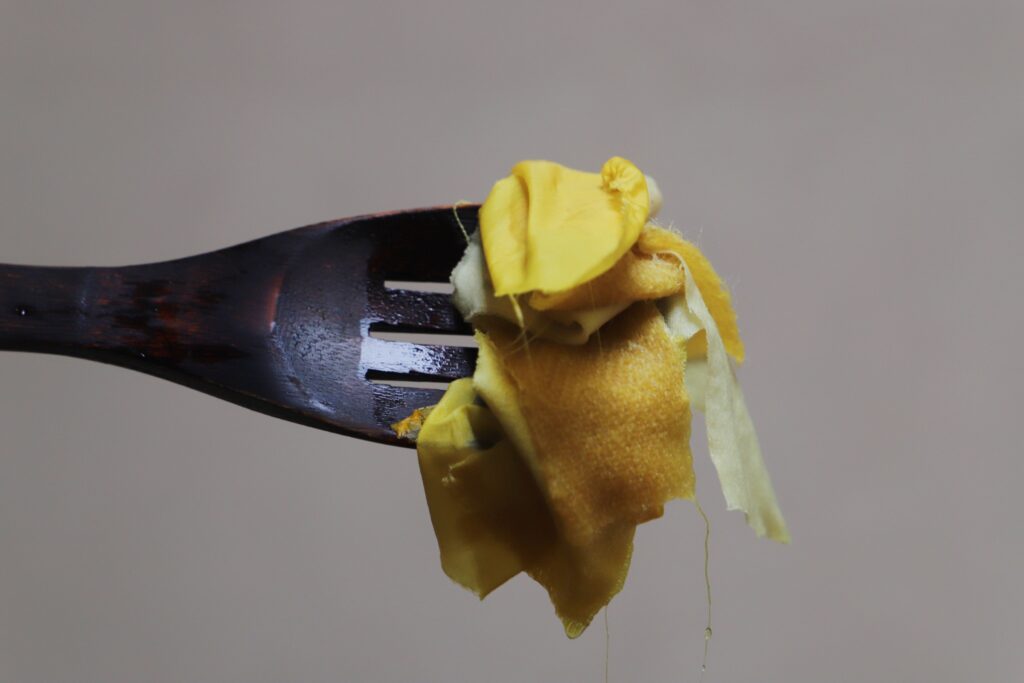
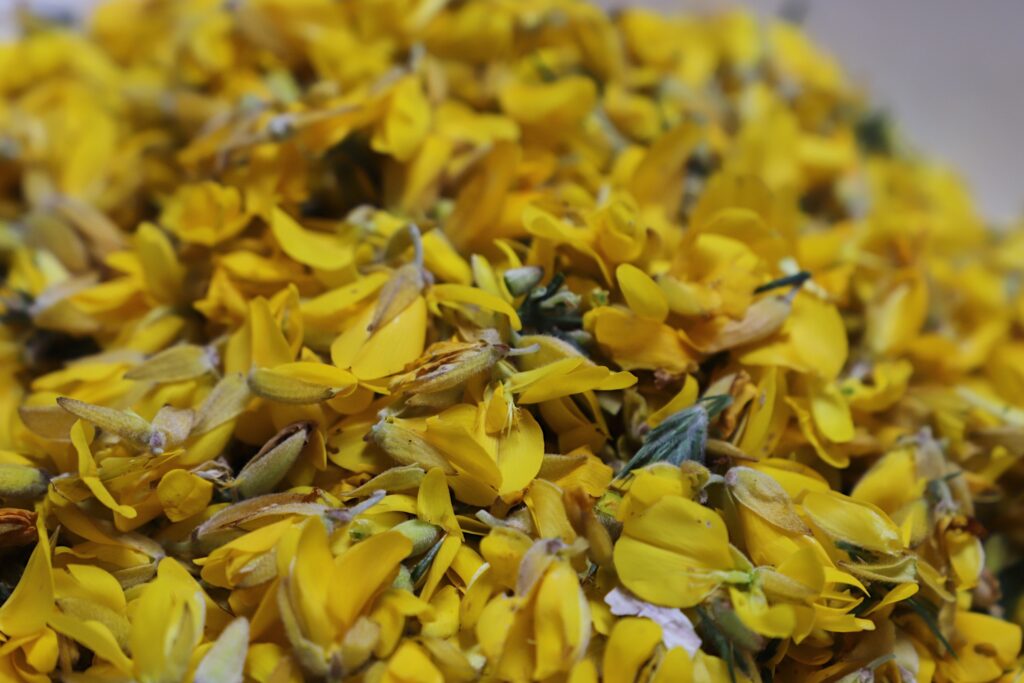
Blossoming from March to August, flowers bloom on different species throughout the year. The flowers provide a healthy supply of pollen for bees & the prickly bushes provide a safe habitat for wildlife.
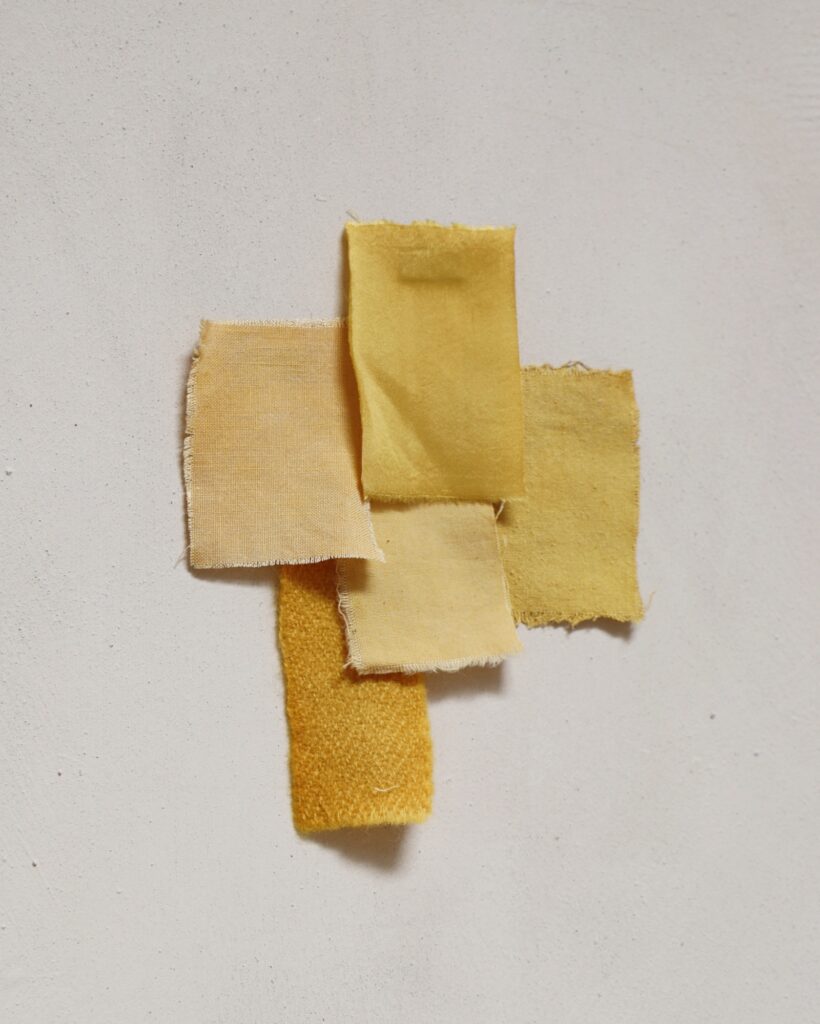
A heritage plant
In Celtic tradition, gorse was associated with the Celtic god of light, love & fertility and was one of the sacred woods burned on the Beltane bonfires. Gorse has a high oil content in its branches, it catches fire easily & burns well. For this reason, it was the preferred choice of tinder & fuel especially amoungst bakers. The ashes, high in alkali content, were mixed with animal fat to make soap or used to improve the soil.
How to naturally dye with gorse
- Remove gorse flower petals from the prickly stems.
- Add to a pot, cover with water & add heat.
- Simmer gently for 1-2 hrs.
- Use a strainer to remove the petals from the pot.
- Add your fibre & simmer gently.
- When you are happy with the colours, remove the fibres from the pot.
- Rinse & hang to dry.
How much gorse should I use?
As a guide, use twice the weight of dye material to whatever you are dyeing. If you are dyeing a t-shirt & it weighs 150g, use 300g of gorse flower.
The weight of the item to be dyed is known as WOF. Use twice the W.O.F in gorse.
The more plant material you use the stronger your colours will be. Similarly, the less plant material you use the lighter your colours will be.
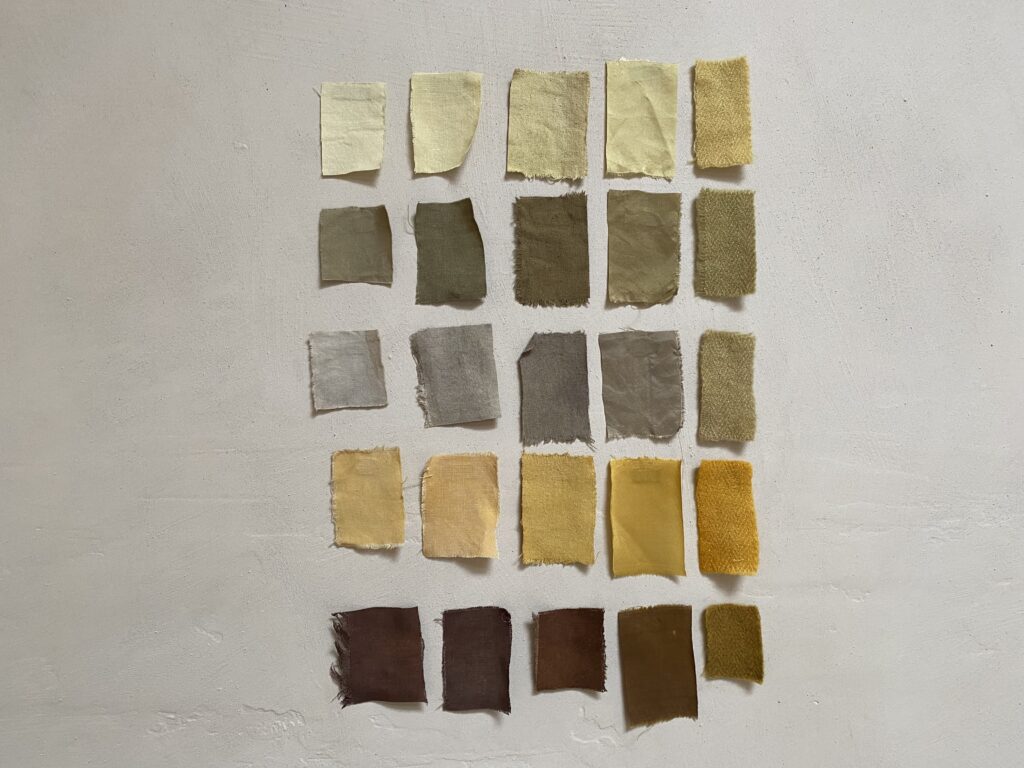
What colours should I expect?
If natural dyeing with Gorse, be sure to separate the flowers from the stems, a task that will take you some time! The flowers are a source of yellow dye, the shoots give shades of green & brown. Buttery yellows will come directly from the dye pot.
Modifiers will give you a range of other tones. A modifier is an ingredient you add to modify or change the colours. As you can see from the photo above, shades of yellow, to orange, through green, grey and brown result from adding modifiers into these experiments. The colours are rich & varied making it easy to see how this was a common dye source in early dyeing.
EXPAND YOUR NATURAL DYE SKILLS & DEEPEN YOUR PRACTICE
Whether experimenting with this plant or curious about other natural dyes, there’s so much more to discover. I’m re-opening enrolment for my Foundational Natural Dye Course & Coaching, where we’ll dive deep into the art and science of creating beautiful, sustainable colours from nature.
If you want to deepen your practice, this course will take you through foundational techniques of natural dyeing. Expand your craft & elevate your learning with live classes, a full natural dye curriculum & expert guidance to help you along the way. Keep an eye out for more details.
Until then, happy colour adventures!
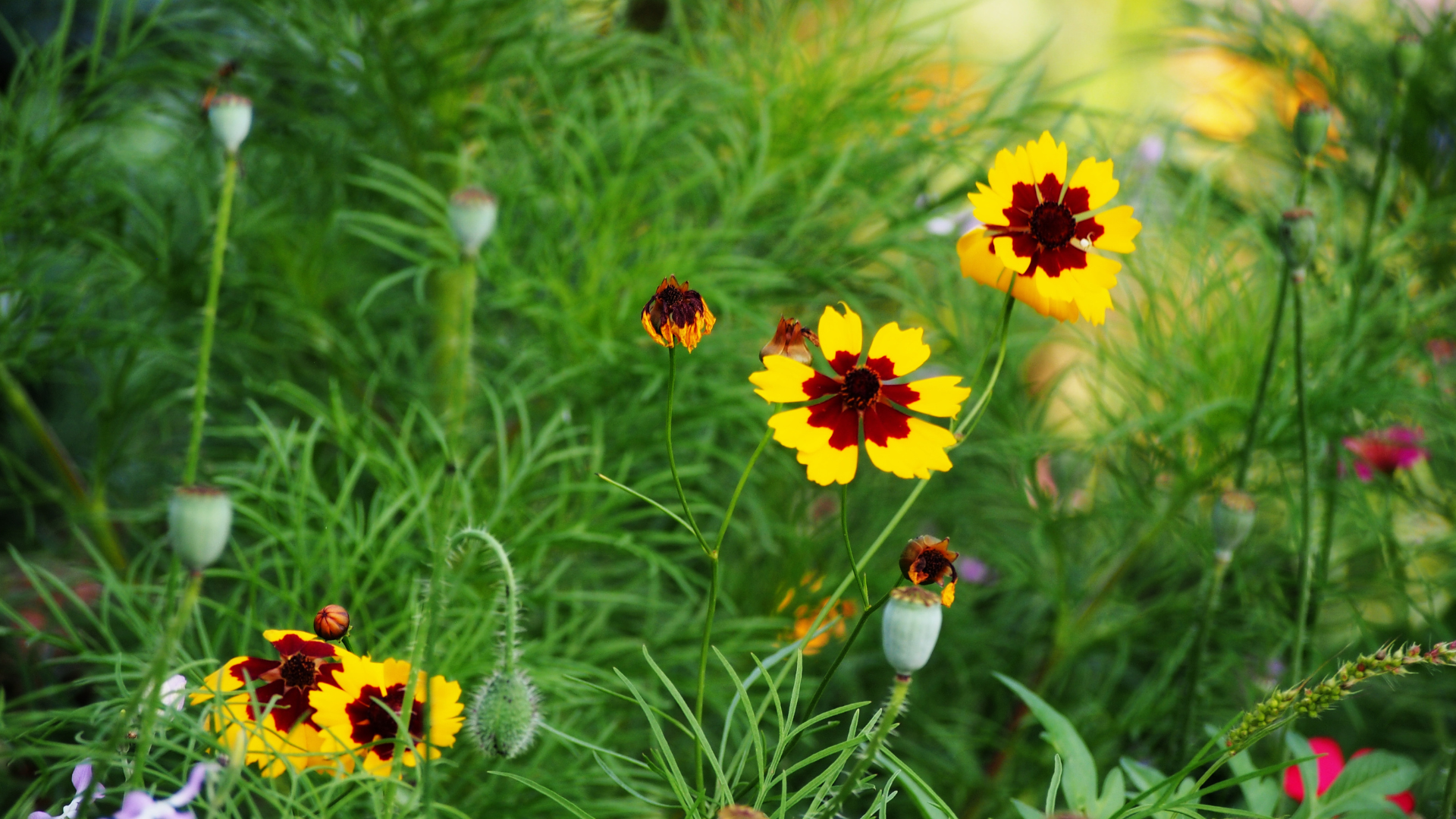
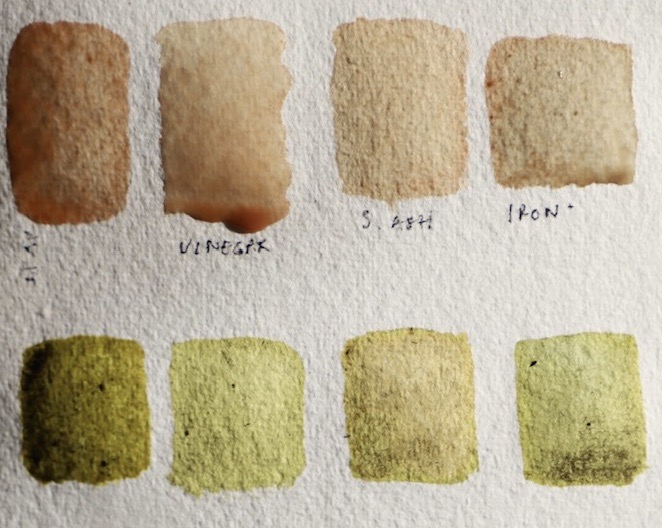
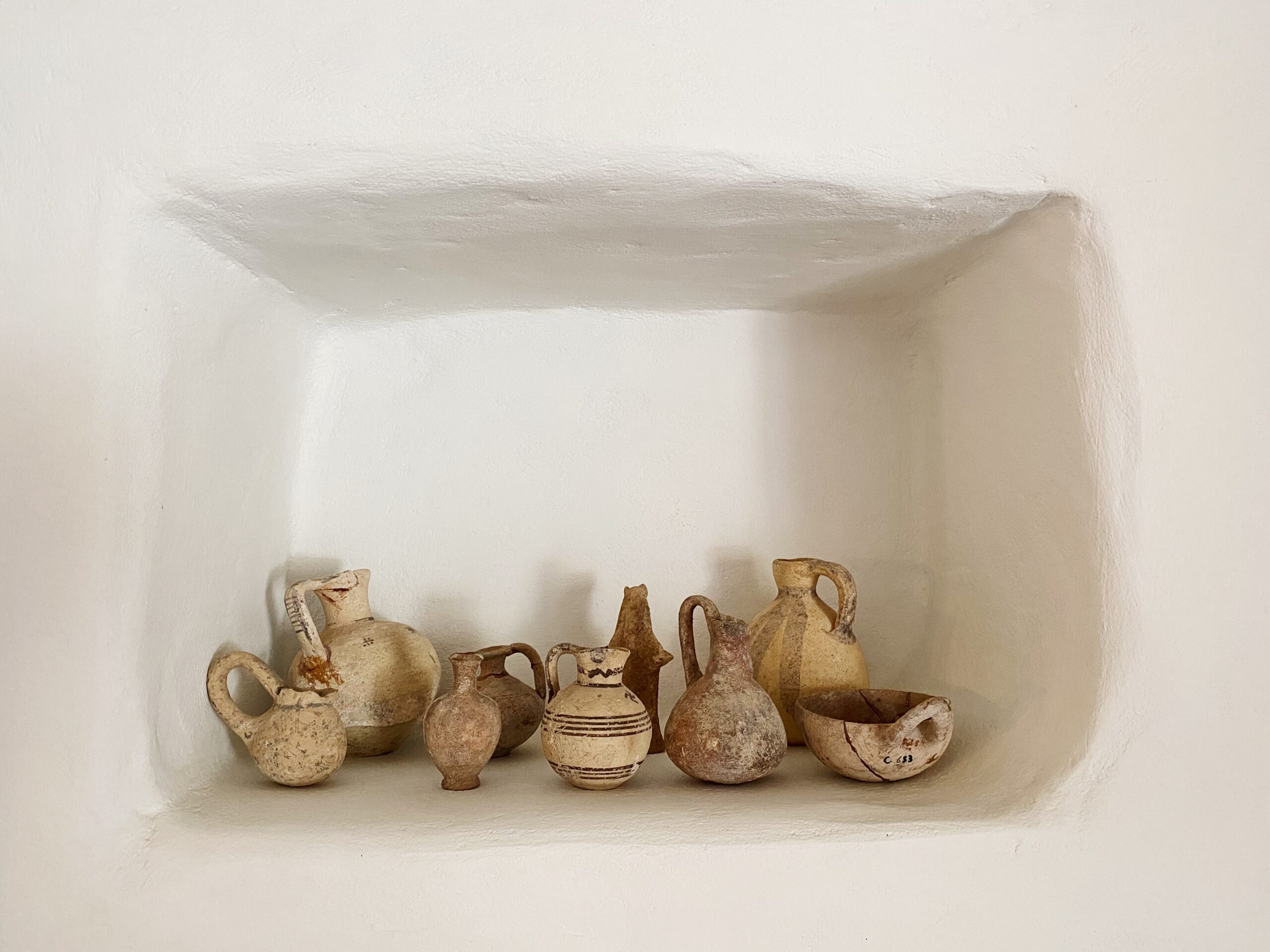
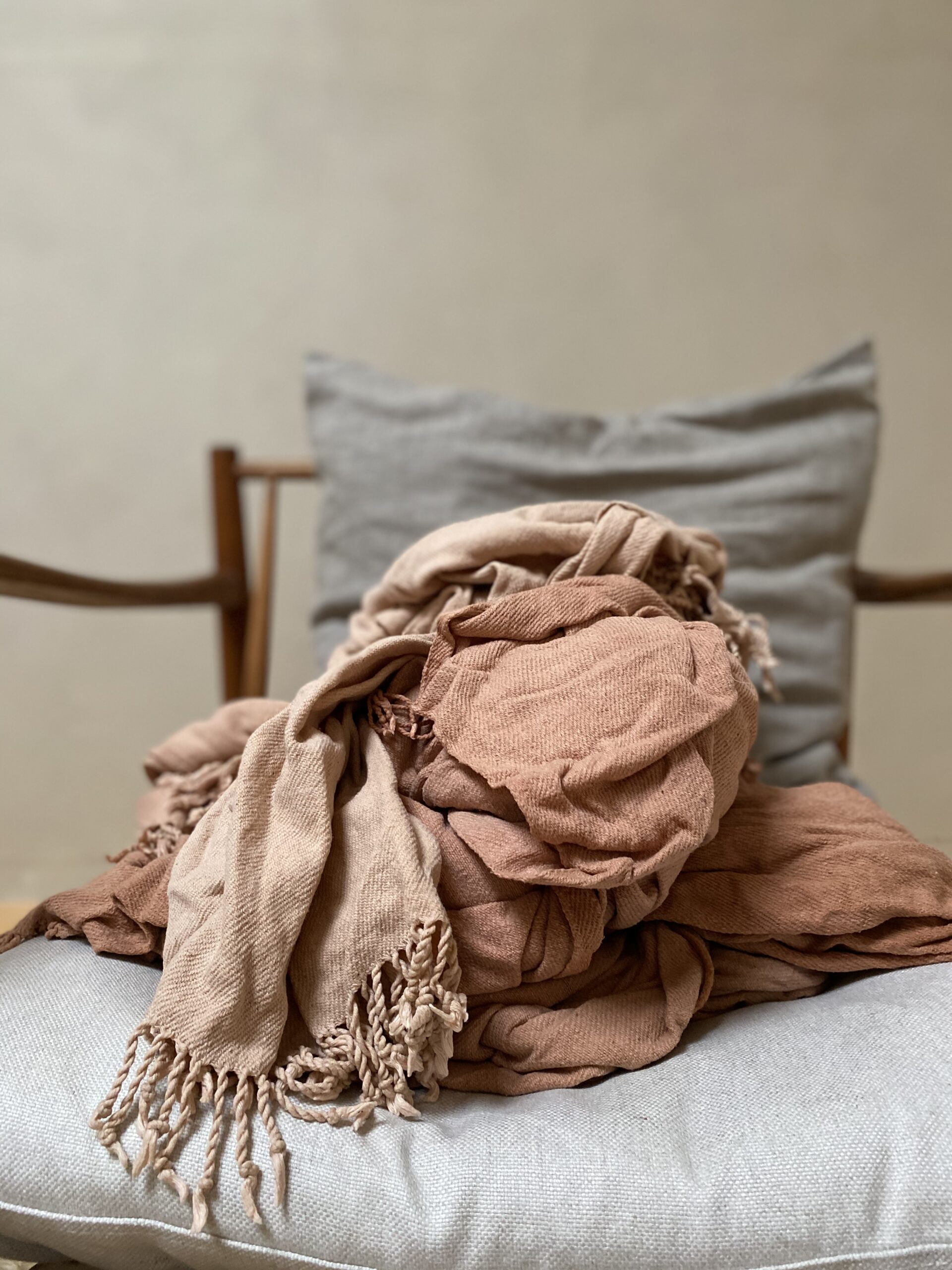


+ show Comments
- Hide Comments
add a comment